Crochet offers more than just the standard single, double, and treble stitches.
If you’re craving a fresh challenge—or want to spice up your project repertoire—advanced crochet techniques like Tunisian crochet and broomstick lace (plus even more methods) await.
These stitches can introduce entirely new fabrics and textures to your creations, helping you produce eye-catching garments, home décor, and accessories that stand out from the norm.
1. Why Explore Advanced Techniques?
- Creative Challenge: Moving beyond basic stitches keeps your crochet practice lively and engaging.
- Expanded Pattern Options: Tunisian and broomstick lace can produce motifs, textures, and fabrics you can’t replicate with standard crochet stitches.
- Unique Results: Stand out by gifting or wearing items that show off less common crochet methods, sparking curiosity among fellow crafters.
2. Tunisian Crochet Basics
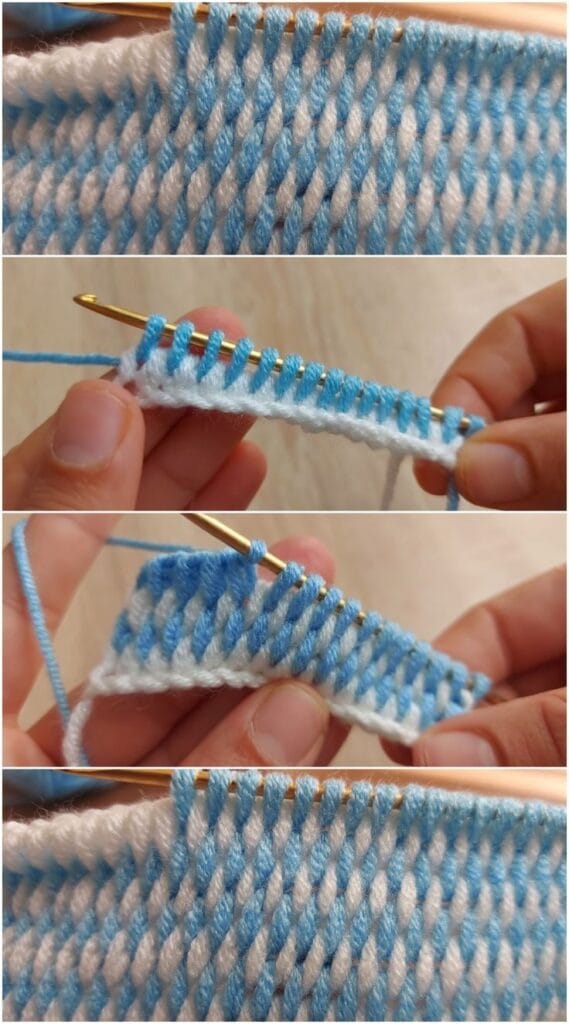
What is Tunisian Crochet?
Sometimes called “Afghan crochet,” Tunisian combines elements of knitting (multiple stitches on the needle) with crochet (using a hook).
Each row of Tunisian crochet has two parts:
- Forward Pass: You pick up loops across the row.
- Return Pass: You “work off” those loops to create your stitches.
Result: A distinctive, often dense fabric that resembles knitting on one side but has a textured, woven look on the other.
Essential Tools
- Tunisian Crochet Hook: Longer than a standard hook.
- Straight Hooks: Best for smaller pieces like dishcloths, squares, or accessories.
- Cabled Hooks: Features a cord (like circular knitting needles) for large projects (afghans, shawls) to hold more loops without crowding.
Key Stitches & Techniques
- Tunisian Simple Stitch (TSS): The foundational stitch, yielding a grid-like pattern.
- Tunisian Knit Stitch (TKS) & Tunisian Purl Stitch (TPS): Mimic knitted textures provide variety.
- Special Variations: Honeycomb stitch (alternating TKS and TPS), Tunisian lace patterns, and colorwork.
Common Pitfalls / Tips
- Curling Edges: Common in Tunisian. Block your piece, or try a looser tension and borders in standard crochet to reduce curl.
- Maintaining Consistency: Keep loops at an even height on your hook. If you pull up loops too tightly or loosely, the fabric can become uneven.
3. Broomstick Lace
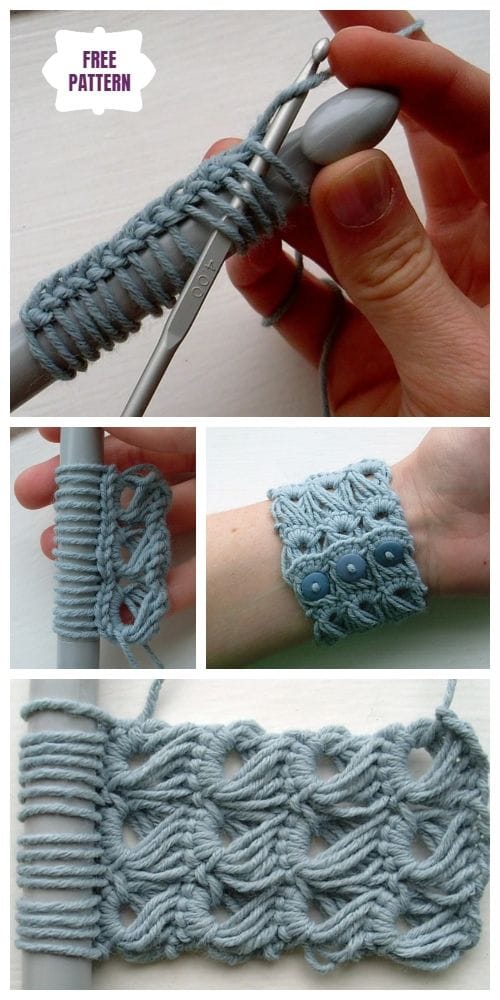
Overview of Broomstick Lace
Also known as “Jiffy Lace,” broomstick lace uses a large diameter tool (originally a broomstick handle) to create uniform loops, then crocheting those loops together in various groupings.
The result is a lacy, openwork fabric with signature elongated loops.
Tools & Materials
- Large Knitting Needle or Specialty Tool: Sizes US 35 or larger can serve as your “broomstick.”
- Lightweight or Medium Yarn: Thinner yarn highlights the loops; chunkier yarn yields bold textures.
Step-by-Step Technique
- Make Loops: Work your row, pulling each stitch’s loop onto the broomstick handle.
- Crochet the Loops: Slide loops off in groups (e.g., 3–5 loops) and work single crochet (or another stitch) through them to secure them.
- Consistent Loop Size: Aim for uniform tension when sliding loops onto the handle so each row matches the loop length.
Project Ideas
- Scarves & Shawls: Broomstick lace can produce dramatic, airy wraps.
- Decorative Edging: Use broomstick lace panels or stripes to embellish cardigans, skirts, or sleeves.
4. Beyond the Basics: Other Advanced Crochet Techniques
While Tunisian and broomstick might be the most common advanced methods, there are plenty of other ways to break free from routine stitches.
Hairpin Lace
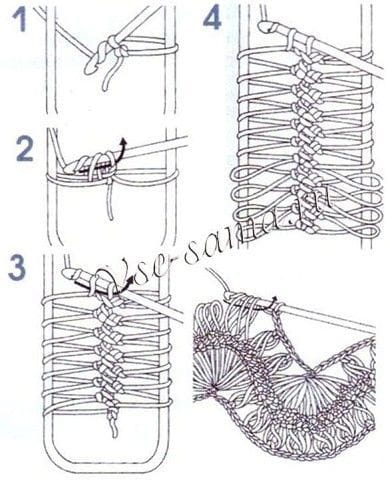
- Loom Setup: A hairpin lace loom has two parallel prongs connected by a top bar. You create a series of loops along the prongs, then join them with crochet stitches for a delicate, open mesh.
- Uses: Beach cover-ups, lightweight shawls, or even home décor items.
Tapestry Crochet
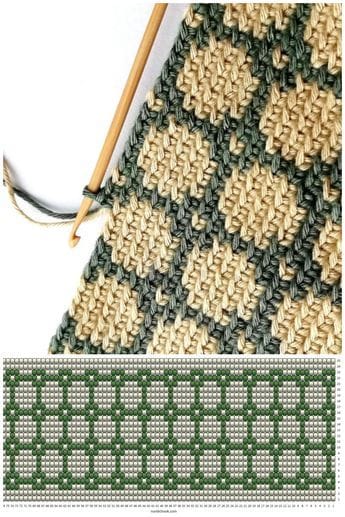
- Colorwork Method: Carry multiple yarns throughout each row, cropping over unused colors to create intricate patterns or pictures.
- Appearance: Similar to colorwork knitting or cross-stitch visuals within crochet.
Crochet Cables
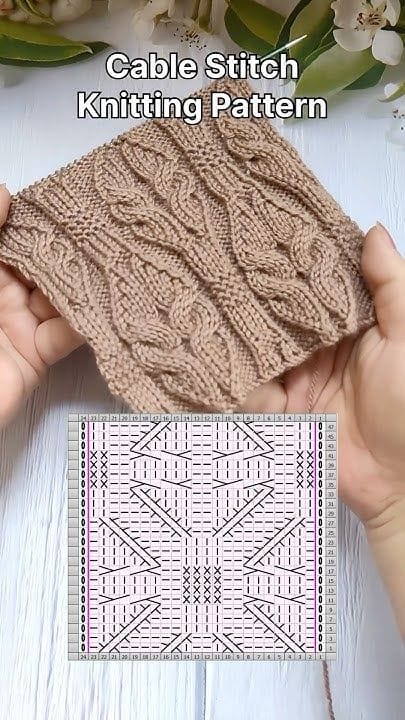
- Aran-Style Textures: Form cabled motifs via front and back post stitches, mimicking the look of knitted cables.
- Great for: Heavier items like blankets, sweaters, or hats benefit from thick, raised patterns.
Freeform Crochet
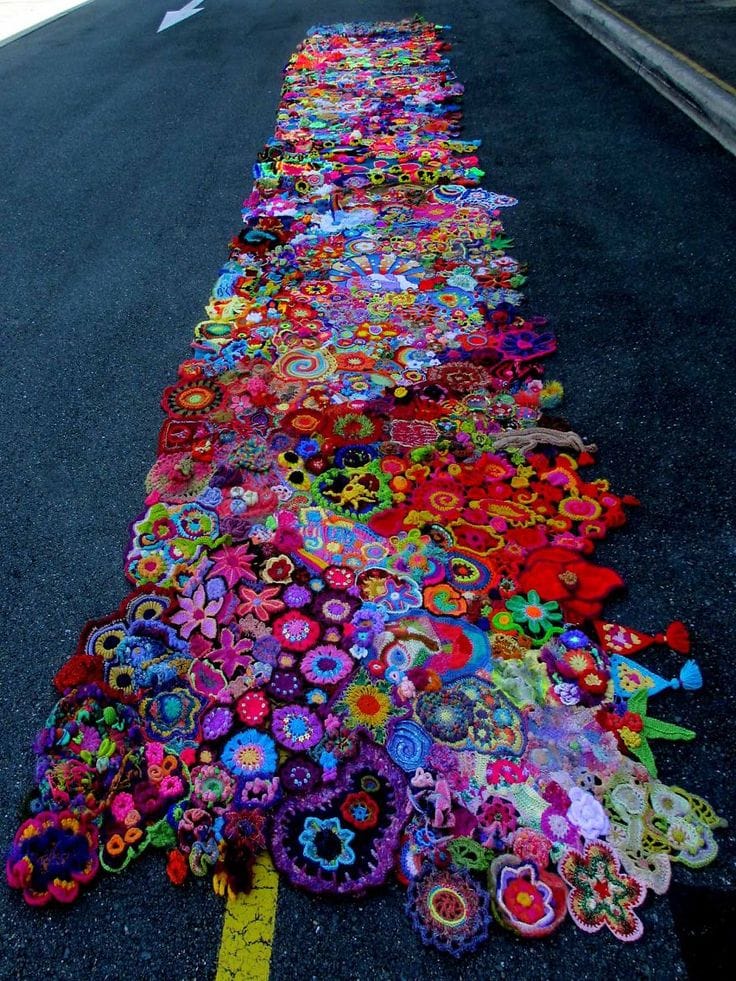
- No Rules: Combine various motifs, stitches, yarns, and shapes on the fly.
- Highly Personal: Encourages improvisation—perfect for artistic crafters wanting total freedom.
5. Tools & Notions for Advanced Techniques
Hooks & Looms
- Double-Ended Hooks: For certain Tunisian in-the-round projects.
- Hairpin Lace Loom: Adjustable prongs for different loop widths.
- Broomstick Pins: Dedicated pins or large knitting needles.
Stitch Markers & Row Counters
- Keeping Track: Advanced stitches often involve multiple steps or color changes.
- Prevent Mistakes: Use markers liberally for tricky repeats.
Blocking & Finishing
- Blocking Mats: Lace or cable work might need a good block to reveal the pattern.
- Yarn Needles: A tapestry needle makes weaving in ends on colorwork or multi-part pieces simpler.
6. Selecting Yarn & Fibers
Matching Fiber to Technique
- Tunisian Crochet: Produces a denser fabric, so try wool or wool blends for warmth or a cotton blend if you want structure without too much weight.
- Broomstick & Hairpin Lace: A yarn with a good drape (like cotton, silk, or bamboo) highlights the open loops well.
Color & Texture Considerations
- Solid vs. Variegated: Complex stitches can get lost in heavily variegated yarn. If the stitch is the star, pick solid or heathered shades.
- Swatching: Always do a mini sample to see how the color and fiber behave in advanced stitch patterns.
7. Tips & Troubleshooting
Tension & Gauge
- Hook Size: Adjust up or down to achieve comfortable loops in broomstick lace or an even Tunisian surface.
- Gauge Swatch: A gauge is essential for wearable projects to prevent too-snug or oversized garments.
Learning Curves & Resources
- Video Tutorials: Sometimes, seeing the motion of advanced stitches is far clearer than reading about them.
- Pattern Books: Look for specialized books or guides on Tunisian, broomstick, or tapestry crochet.
Common Mistakes
- Broomstick Lace Loop Discrepancies: Keep consistent tension on the large needle or pin.
- Tunisian Curling: Practice with different stitches or add a border to counteract the curl.
- Color Bleeding in Tapestry: If using multiple yarns, test for colorfastness, especially if crocheting with intense hues.
Patience & Practice
- Small Projects First: Scarves, washcloths, or small decorative pieces let you master the technique before jumping into large afghans or garments.
- Embrace Mistakes: You learn the intricacies of advanced stitches through trial, error, and frogging.
8. Inspiring Projects & Patterns
Tunisian Crochet Highlights
- Colorful Blankets: Tunisian entralac or mosaic patterns for stunning color blocks.
- Garments & Shawls: Try Tunisian lace for airy wraps or sweaters with a unique stitch texture.
Broomstick Lace Creations
- Elegant Scarves: A row or two of broomsticks can turn a simple scarf into a work of art.
- Lacy Shawls: Perfect for layering—especially in cotton or lightweight wool blends.
Showcasing Hairpin, Tapestry, & Cables
- Hairpin Lace Wraps: Beachy cover-ups or festival-worthy shawls.
- Tapestry Crochet Bags: Bold motifs or geometric patterns for stylish totes.
- Cabled Crochet Sweaters: Warm, textured garments with dimensional impact.
Combining Techniques
- Mixed Media: Perhaps a Tunisian body with broomstick edges or tapestry color blocks. The only limit is your imagination.
9. Conclusion & Call to Action
Recap the Potential of Advanced Techniques
From the knit-like fabric of Tunisian crochet to the delicate loops of broomstick lace, advanced methods open new doors for crocheters who want more complexity and variety.
These techniques can transform your usual crocheting into show-stopping, conversation-starting pieces.
Would you love to share your knitting techniques?
- Start Small: Don’t let complexity scare you—short scarves, coasters, or practice squares are great stepping stones.
- Share & Learn: Post progress on social media (#TunisianCrochet, #BroomstickLace) or join online CALs (crochet-alongs) to swap advice and inspiration.
Want to dig deeper?
- Free Tutorials / Links: Highlight any resources (YouTube channels, pattern designers, or crochet forums) specializing in advanced crochet.
- Comment & Connect: Ask readers to share their favorite advanced technique or show off WIP photos—helping build a community of adventurous crocheters.
Final Thoughts
Advanced crochet doesn’t have to be daunting—, once you get the hang of these specialty stitches, you’ll find them addictive.
Whether it’s the knit-like appeal of Tunisian, the lacy loops of a broomstick, the intricate colorwork of tapestry, or the free-spirited nature of hairpin lace, each method brings a refreshing twist to your projects.
So grab a new hook, pick some yarn, and let your curiosity guide you toward a world of crocheted wonders.
Happy stitching!
